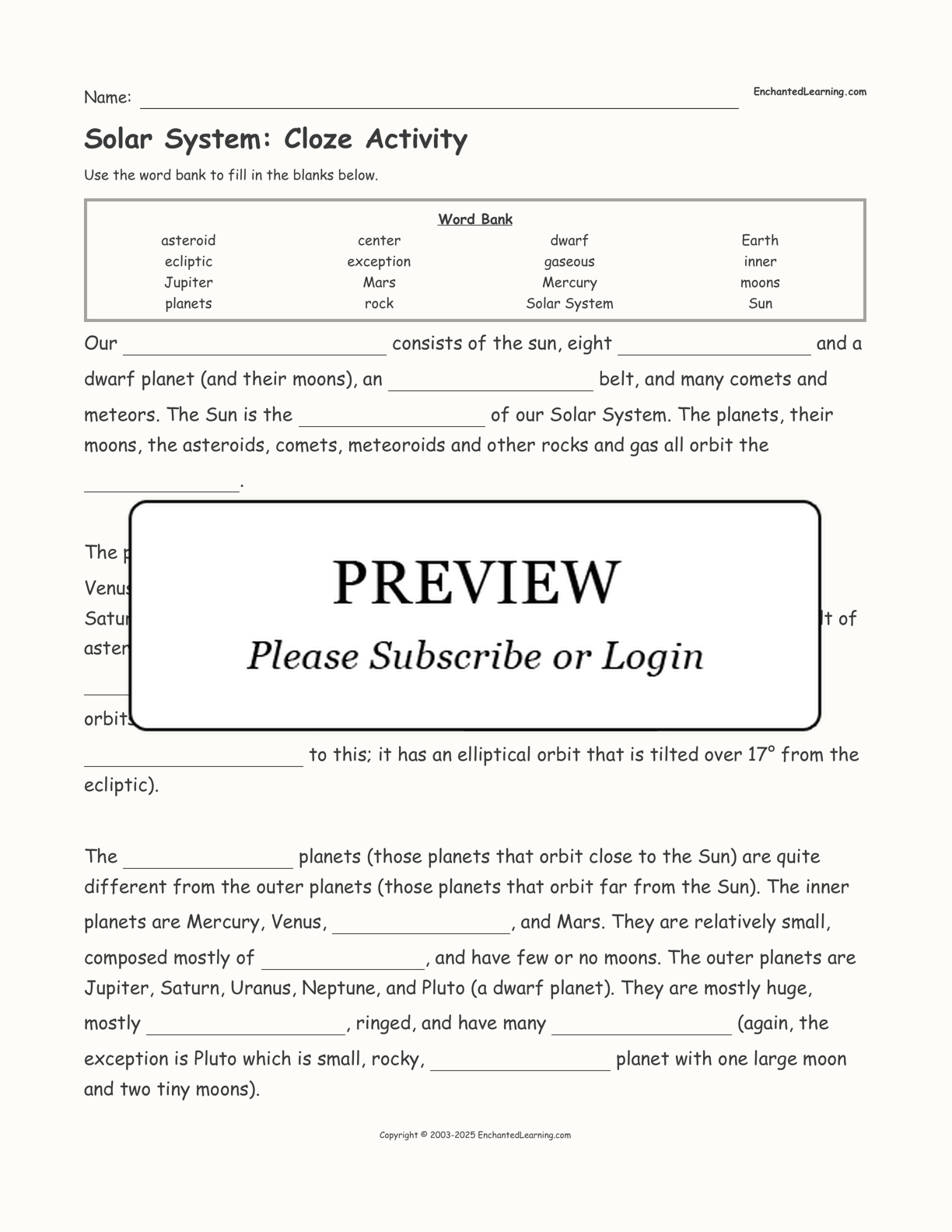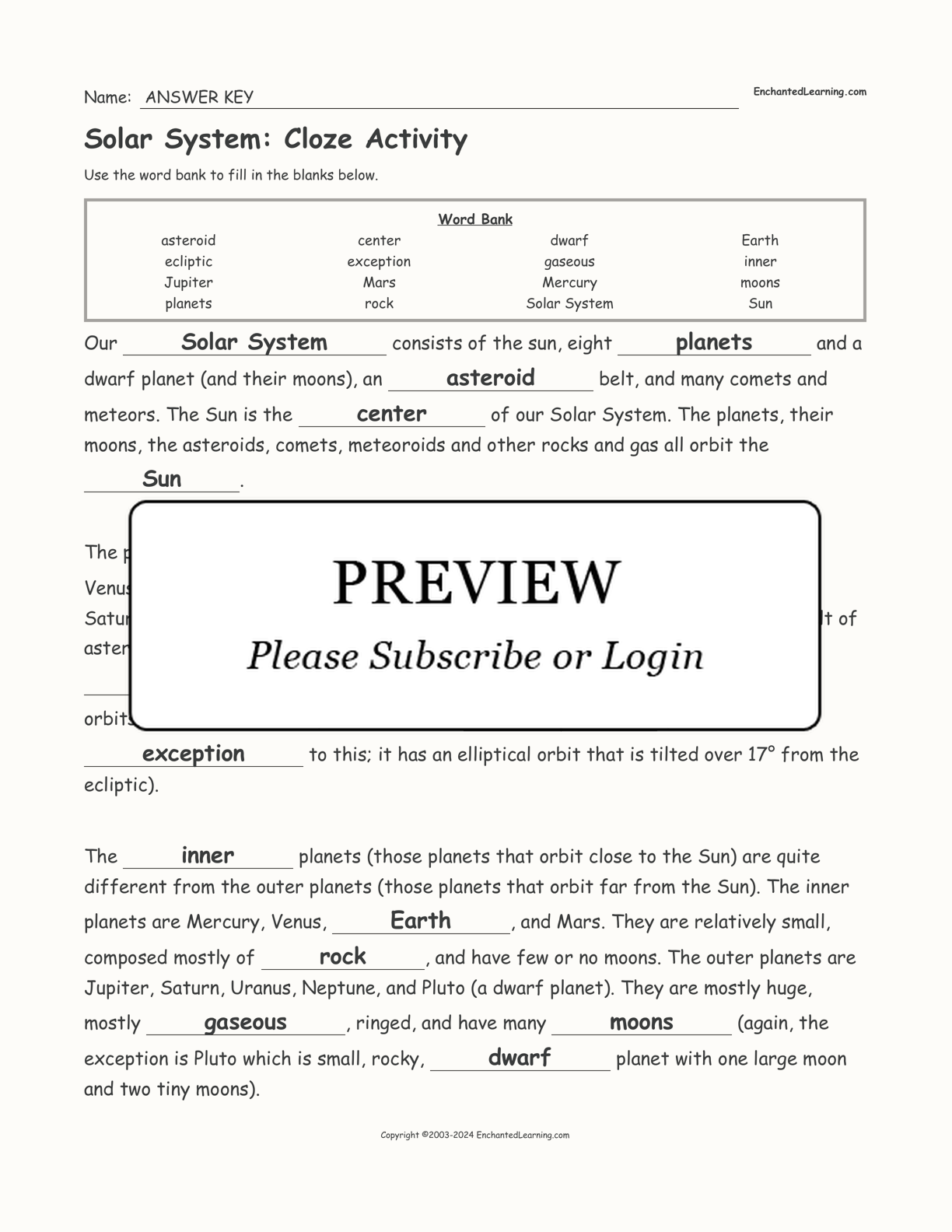Content Only Available to Members
Worksheet Preview
Solar System: Cloze Activity



1

2
Title
Solar System: Cloze Activity
Content Type
Printable Worksheet
File Type
PDF
Pages
2 pages
Contains Answer Key
Available to Members Only
Use the word bank to fill in the blanks in this Solar System cloze activity. This is a printable worksheet.
Instructions
For the Student:
Use the word bank to fill in the blanks below.
Extra Information
Word Bank
asteroid, center, dwarf, Earth, ecliptic, exception, gaseous, inner, Jupiter, Mars, Mercury, moons, planets, rock, Solar System, Sun
